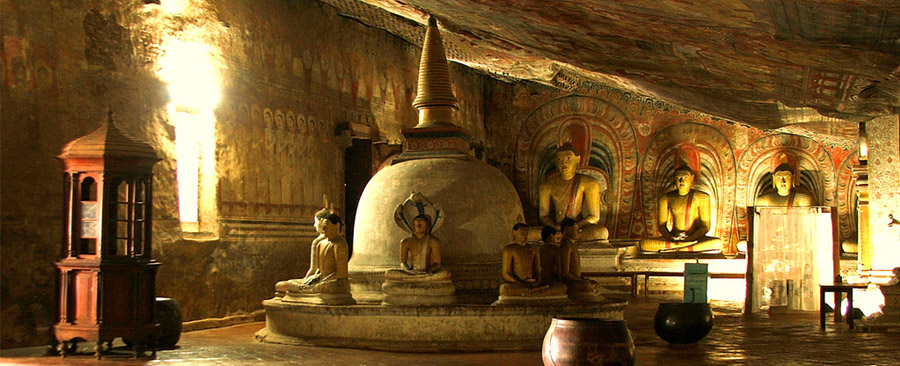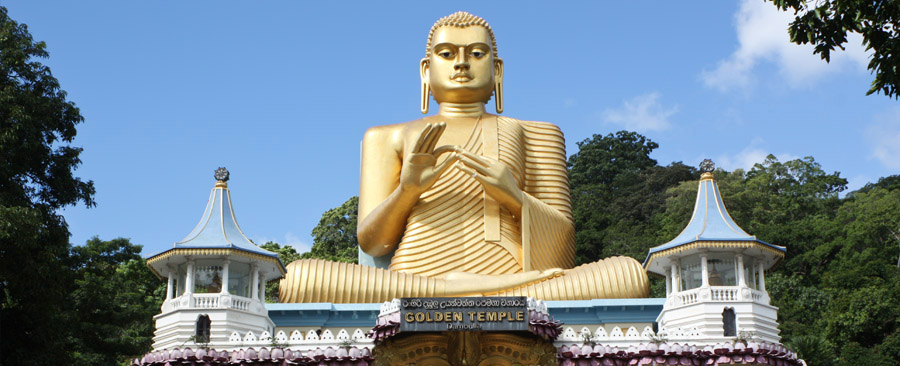
The Rock Temple of Dambulla, called Jumbukola Vihara in the (Mahavamsa)-the principal Pali Chronicle of Sri Lanka, is situated about forty seven miles north west of Kandy, the last capital of the Sinhalese kings, on the main road to Anuradhupura. The shortest way, from Colombo to Dumbulla lies via Kurunegala, one of the capitals of the medieval Sinhalese kings. The other rock temple of equal fame, Aluvihare, where, according to tradition, the Buddhist scriptures were first committed to writing about The first century B.C., list about twenty-six miles to the south on the Kandy Dambulla road. And the famous fortress of Sigiriya with its beautiful frescoes rises aloft like a gigantic cylinder at a distance of about twelve miles to the north-east of Dambulla.
Dambulla is a scent of unique interest. Its rock temples are the most extensive in the Island, and one of the most ancient, and in the highest state of preservation and order.
Dambulu - gala (the rock of Dambulla), in which these temples are situated, is almost insulated and of a vast size. Its perpendicular height above the plain is about six hundred feet. Very few parts of it are covered with wood, and in general its surface is bare and black.

There are five caves (shrine rooms) in Dambulla temple. All of these caves arc full of statues of Buddha and various personages of the Buddhist Order or History. There are 150 Buddha images in these caves. Cave No. 5 (the last in order) has no historical value as it was done in the second decade of this century. All of the other caves contain statues and paintings representing various epochs of Sinhalese sculpture and painting.The early paintings of Dambulla are believed by some to belong to the 8th century A. C. But this cannot be proved at all because of over painting. Nevertheless this place is a mine of decorative designs, the patterns of which resemble those of Sigiriya. To a student of the history of Buddhism a careful study of the paintings of Dambulla provides a good deal of source material.


